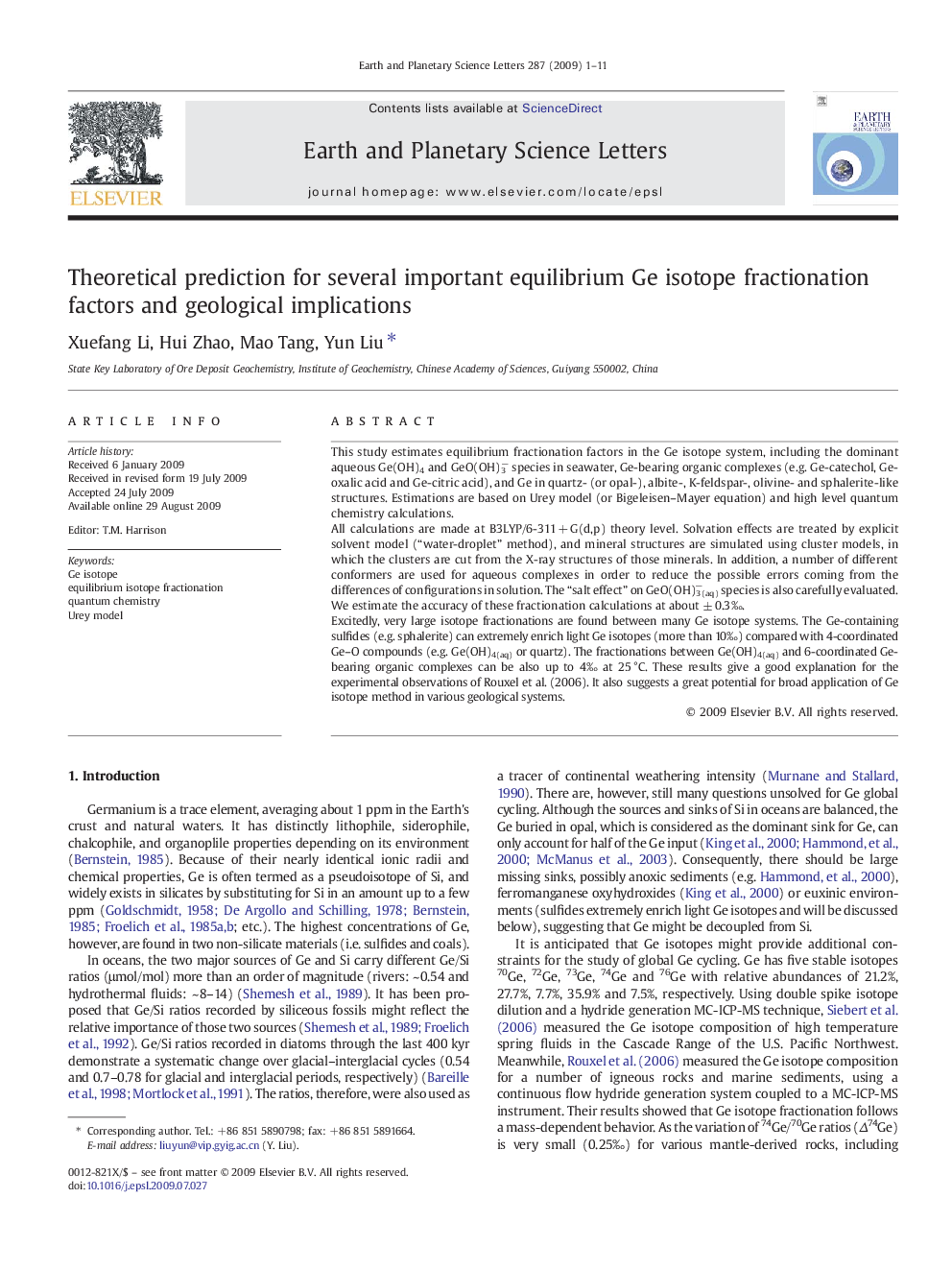| Article ID | Journal | Published Year | Pages | File Type |
|---|---|---|---|---|
| 4678801 | Earth and Planetary Science Letters | 2009 | 11 Pages |
This study estimates equilibrium fractionation factors in the Ge isotope system, including the dominant aqueous Ge(OH)4 and GeO(OH)3− species in seawater, Ge-bearing organic complexes (e.g. Ge-catechol, Ge-oxalic acid and Ge-citric acid), and Ge in quartz- (or opal-), albite-, K-feldspar-, olivine- and sphalerite-like structures. Estimations are based on Urey model (or Bigeleisen–Mayer equation) and high level quantum chemistry calculations.All calculations are made at B3LYP/6-311 + G(d,p) theory level. Solvation effects are treated by explicit solvent model (“water-droplet” method), and mineral structures are simulated using cluster models, in which the clusters are cut from the X-ray structures of those minerals. In addition, a number of different conformers are used for aqueous complexes in order to reduce the possible errors coming from the differences of configurations in solution. The “salt effect” on GeO(OH)3−(aq) species is also carefully evaluated. We estimate the accuracy of these fractionation calculations at about ± 0.3‰.Excitedly, very large isotope fractionations are found between many Ge isotope systems. The Ge-containing sulfides (e.g. sphalerite) can extremely enrich light Ge isotopes (more than 10‰) compared with 4-coordinated Ge–O compounds (e.g. Ge(OH)4(aq) or quartz). The fractionations between Ge(OH)4(aq) and 6-coordinated Ge-bearing organic complexes can be also up to 4‰ at 25 °C. These results give a good explanation for the experimental observations of Rouxel et al. (2006). It also suggests a great potential for broad application of Ge isotope method in various geological systems.
